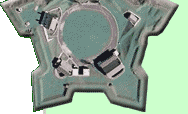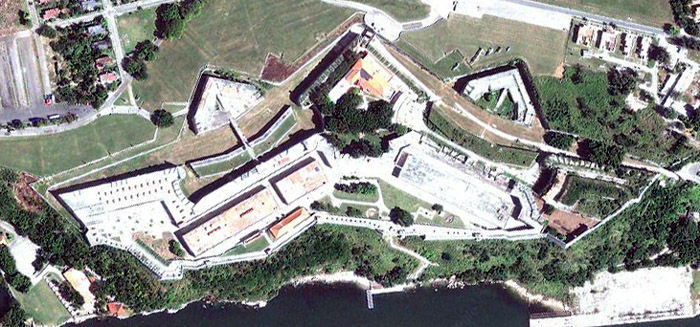
 |
 |
Fortaleza de San Carlos de la Cabana Havana, Cuba |
 |
 |
 |
 |
 |
||
 |
The name Havana is of dubious origin. Opinions range from a legend about a local Indian chief's hottie daughter (who was presumably named Havana or something similar) to the bastardization of a Germanic word meaning "haven." However the city got its name, what is now the harbor at Havana was recognized by Spanish explorers in the early 16th century as a perfectly formed, perfectly sited haven for their naval exploits, and it probably didn't hurt that there were Indian chiefs with hottie daughters in the vicinity. Cuba didn't have much in the way of the gold and silver that Spanish conquistadors were looking for, so Havana remained largely unpopulated for its first several decades, serving mostly as a convenient base from whence to pillage the Americas. French Huguenot pirate Jacques de Sores easily captured the lightly-defended Havana in 1555. His dreams of the enormous wealth he imagined were stored there were unrealized, however, so he tried ransoming the town's population, but nobody seemed interested in paying for them. Enraged, Sores and his pirates burnt the town and laid waste to the surrounding countryside. In addition to regular attacks on Havana by pirates, buccaneers and corsairs, the goodies that were being shipped back to Spain were increasingly being intercepted by those same maritime scoundrels. These unfortunate doings led Spain's King Phillip II (1527-1598) to decree in 1561 that Havana would be fortified, and all the treasures that were being legally and lovingly obtained from the Americas would be shipped to Havana, from whence they would sail to Spain under the protection of the Armada. The Spanish crown soonafter designated Havana as "Key to the New World and Rampart of the West Indies," which probably sounds a lot cooler in Spanish. Halfhearted fortifications were beefed up, and Fort San Felipe del Morro, at the mouth of the harbor, became the first serious challenge to those interested in sacking Havana. El Morro and some smaller forts did a reasonably thorough job of repelling all invaders until the Seven Years War (1756-1763) brought the British fleet to Havana on June 6 1762. The British landed 11,000 men east of Havana and besieged el Morro, succeeding in its conquest by the end of July. The city formally surrendered to the British on August 13, but less than a year later the Treaty of Paris (1763) gave Cuba back to Spain, in trade for Florida. Having lost Havana once, King Charles III (1716-1788) took steps to ensure that Spain would never lose it again. Construction on the Fortaleza de San Carlos de la Cabana (Fort of Saint Charles, which is thankfully also known as La Cabana) began in 1763. Work continued until 1774, by which time La Cabana was the second largest colonial fortification in the New World, after only Fort St. Felipe de Barajas at Cartagena, Colombia (which is a lovely fort, but even less starrish than La Cabana). La Cabana was obviously planned with an eye toward defending both the seaward and landward sides, should the wicked British retry their wicked landing games. The fortification of Havana worked: Nobody ever took a naval shot at the city again. La Cabana was used as a Spanish military base and prison for the next few centuries. Rebels led by Che Guevara (1928-1967) captured La Cabana from what one imagines was an unprepared Batista garrison in 1959. For five months Guevara commanded the fort's revolutionary garrison, overseeing the tribunals and executions of various (perhaps) pro-Batista persons. Today, La Cabana is part of an historical park, which includes El Morro. Several museums are on the fort's grounds, and every night at 9pm a cannon is fired from La Fortaleza de San Carlos de la Cabana: This cannon shot, called El Canonazo de las 9, is a holdover from the city's colonial past that signifies when Havana's city walls were closed for the night. |
 |
 |
||
|
|
|||||||
Info Source 1
Info Source 2
Info Source 3
Info Source 4 Info Source 5 Info Source 6 Info Source 7 Info Source 8 Info Source 9 Thanks to Google Maps for the image! ©2011 starforts.com |
 |